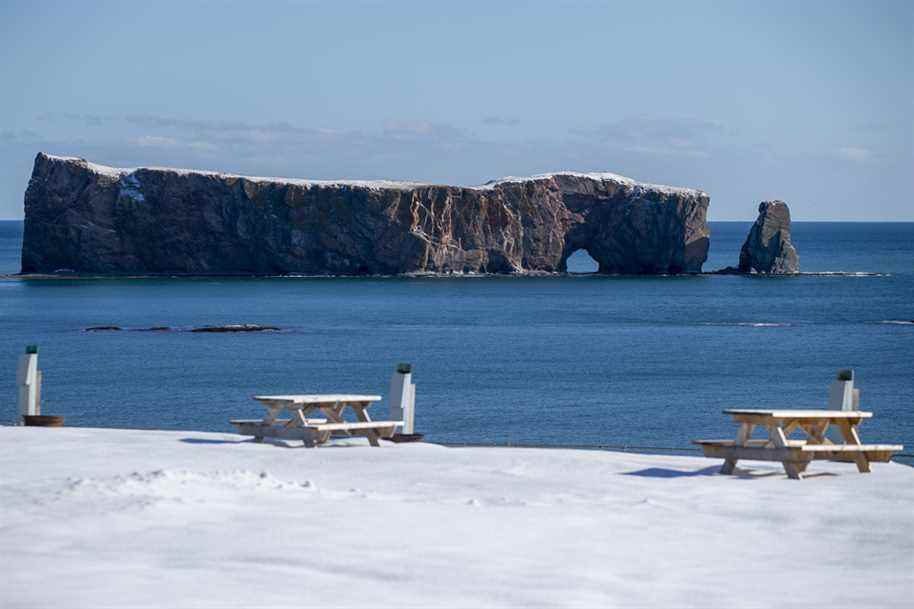(Quebec) More and more Quebecers are choosing to leave their region to settle in Gaspésie or the Magdalen Islands, reveal new data from the Institut de la statistique du Québec (ISQ).
Posted at 3:16 p.m.
These figures unveiled on Thursday confirm that this region, which not long ago was still experiencing a demographic decline, experienced a prosperous year in 2021. It is even the remote region that has benefited the most in the last year from the phenomenon of returning to the regions, well documented since the start of the pandemic.
The Gaspésie–Îles-de-la-Madeleine region had a positive net migration of 1,378 residents in 2021, double the previous year. In other words, it attracted nearly 1,400 more people than it lost to other regions.
“The Gaspésie has the wind in its sails. It shows up in the demographic statistics. Plus 1378 inhabitants, these are oddly interesting figures. And it’s everywhere in the region, ”rejoices the mayor of Gaspé and president of the Union of Quebec Municipalities, Daniel Côté.

Audrey Desjardins and Gabriel Vézina are among the statistics. The two pharmacists in their late twenties left Montreal for Chandler last January. The two found jobs at the hospital and they were able to buy a house.
“I don’t know if we could have done it in town”, notes Mme Desjardins, originally from the Laurentians and who met her boyfriend while they were living in Montreal.

COURTESY PHOTO
Audrey Desjardins and Gabriel Vézina decided to leave Montreal to settle in Gaspésie.
“To live here you have to like the calm, the absence of traffic, the sea and the beautiful landscapes,” she says. People are nice, people know each other. The pace of life is very different. People are less rushed. ”
Gabriel Vézina, who lived in Montreal for 7 years, admits that he is sometimes bored with restaurants in the metropolis and its activities. “But the internet has changed things. Gaspésie is a lot less isolated than before. We have high-speed internet almost everywhere. We have a lot of everything at hand, ”says the man who grew up in the region.
Growth problems
Gaspésie is not the only remote region to experience a positive net migration in 2021. Bas-Saint-Laurent also achieved the feat (+1597), as did Saguenay–Lac-Saint-Jean (+1405) . But it is in the Gaspé that the net gains – in relation to population – are the greatest among these regions.
The phenomenon is all the more fascinating in that the Gaspé has long known lean years. It lost about 1200 inhabitants per year to the benefit of other regions 20 years ago.
Its net migration has been positive since 2017 (+122). But the phenomenon accelerated with the pandemic (+681 in 2020) and exploded in 2021 (+1378).
The enthusiasm of Quebecers for Gaspésie is essential for the region. The Gaspé population is significantly older than the Quebec average. Without the demographic contribution of other regions, the population would be declining.
“This is a region where natural increase has been negative for a long time, where deaths exceed births. The region’s population was declining,” recalls ISQ demographer Martine St-Amour.
“Natural increase remains negative in this region, but there has been a shift. Gaspésie has had a positive internal migration balance for 5 years, and the gains are increasing year after year,” she notes. “The gains have increased to such an extent that despite the negative natural increase, the population of the region has increased. ”
The population of Gaspésie has indeed gained 1,351 people in 2021, to settle at 92,072.
“The wind industry is driving development to unprecedented levels. There is a shortage of housing, daycare places, manpower…” explains the mayor of Gaspé, Daniel Côté.
He recalls that the LM Windpower wind turbine blade factory will be expanded this year. The number of employees is to be increased from 400 to 600.
“It’s heavy to manage as growth. But we are happy. We have had enough decline in Gaspésie that there, managing growth makes us happy. ”
With Ariane Krol, The Press

